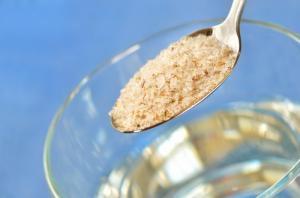

Fiber is essential to having good health. According to organizations like the Institute of Medicine and the American Dietetic Association, women need about 25 grams of fiber per day and men need about 38 grams per day. In contrast, the average adult American only gets 15 grams of fiber per day.
That’s not nearly enough fiber to maintain good health, especially when these estimates are at the low end of what is required for optimal health. And there are some groups of people who get a lot more fiber than this in their diets. For example, a study done on the diets of the Hadza hunter-gatherers of Tanzania found that they got about 100 grams of fiber in their daily diets.
Getting enough fiber will reduce or even eliminate your risk of many diseases. For starters, it is essential to the health of your colon. Taken with adequate water, fiber prevents constipation and adequate amounts greatly reduce your risk of colon cancer. Fiber also helps maintain a healthy gut flora, which keeps your immune system healthy.
Fiber will help lower your blood sugar, cholesterol, and triglycerides, reducing your risk of diabetes and heart disease. Furthermore, it also binds toxins, reducing inflammation in the body, which reduces your risk of all chronic and degenerative illnesses.
In this issue of Sunshine Sharing, we’ll introduce two types of fiber and focus on the value of the second type, soluble fiber. We’ll discuss the many benefits of this type of fiber and introduce you to herbs and formulas that are rich in it.
The Two Types of Fiber
There are two basic kinds of fiber—insoluble or crude fiber and soluble fiber. Crude fiber has been appropriately called roughage, because it is coarser, but soluble fiber should really be called smoothage, because it is soothing and lubricating to tissues when it is properly hydrated.
Crude fibers are made up of cellulose, hemicellulose, and lignin. These are the fibers that make plants woody or stringy. Grass, seed coatings, and peelings contain this type of fiber, bran being a good example. We can’t digest this fiber, but it does bulk the stool and help move things through the digestive tract. It’s been likened to a broom that helps to sweep the colon clean.
Water soluble fibers include gums and mucilaginous fibers, also known as mucopolysaccharides. To break that down into common language, these fibers consist of many (poly) sugars (saccharides) strung together in a similar manner to starch. These chains of sugar molecules absorb water, which is where the mucco (the same root as the word mucous) comes in. When dissolved in water they form a slippery, slimy, gelatin-like mass, which is why we’re calling them smoothage, rather than roughage.
Unlike starch, however, your body cannot break these mucopolysaccharides apart to get energy from them. Instead, they hold onto water in the digestive tract, helping to keep stool bulky and soft. They also serve as food for the friendly bacteria in the digestive tract.
Plants use these compounds to help them store water and food. The slimy material inside of a cactus stem or an aloe vera leaf is a perfect example of this. These plants from hot, dry climates are able to store water during rainy seasons to use during drier periods.
Most fruits and vegetables contain significant amounts of this fiber, which keeps the food juicy. For example, apples, pears, plums or prunes, berries, carrots, onions, and sweet potatoes all contain this type of fiber. It is also found in some seeds (flax and chia) and legumes (beans and peas). Eating these types of food is the best way to obtain the smoothage your body needs, but you can also increase the amount you get by taking mucilaginous herbs also known as mucilant herbs.
Additional Resources
Strategies for Health by Steven Horne
Become a Member
Steven Horne's monthly member program is a way for you to get great information about herbs and natural healing to build your herbal business. Including the ability to share issues of Sunshine Sharing like this one. Click here to learn more.
